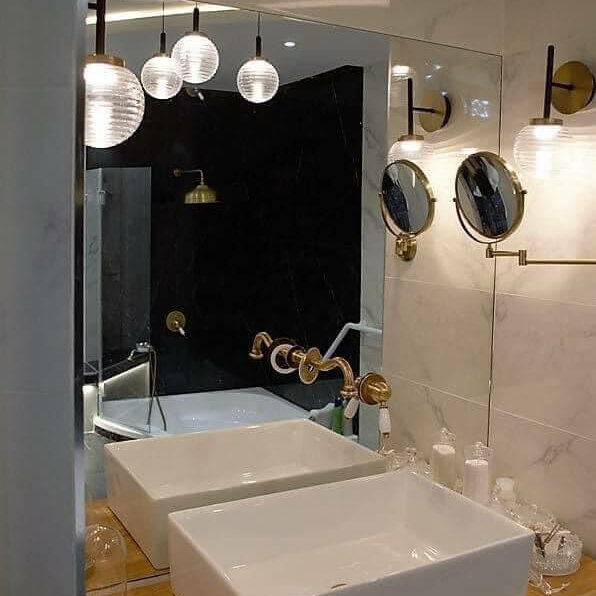When I approach planning and creating a warm modern interior design in my clients' properties, I essentially work according to the principles and rules of spatial design for each modern interior design space:
Lighting design, for me, is the highlight of the design. After all, introducing lighting into different spaces with different functions goes hand in hand with good planning. The atmosphere in the house, following the choice of diverse lighting in terms of location, height of the lighting source and choice of lighting shade according to the time of day and night, will be decisively affected and the house will look different whether the lighting was designed correctly or not. Does the lighting provide a flexible response to the needs of the people living in the house in different corners, and at different times.
That's why I enjoy helping other designers in this field (and of course also in the field of home furnishings with my little website).
When I finished my community service in the Jewish community in Manchester many years ago, I got engaged to my husband, and a magical world of lampshade lighting opened up to me, which was then very common in Europe and less so in Israel. Since the family had a lampshade factory, I was given the opportunity to create and experiment with lampshades that I created by hand painting on silk. The soft light calmed and hypnotized me and was the incentive for me to study interior design and home furnishing.



In honor of Hanukkah, it is impossible not to address the issue of lighting, so if you plan to change the lighting in your home without professional help, at least you should know a few basic lighting concepts:
LUMENS: Represents the amount of light emitted from a light source in one second.
LUMENS/W: The utilization of the light that comes out of the lighting fixture. The higher the number, the more economical and efficient the fixture is.
WATTS: Watt - the electrical power used to produce light from a light bulb.
KELVIN: The color temperature of the bulb. The higher the value, the colder and whiter the hue will be. From now on, when you go to purchase bulbs or built-in lighting fixtures, you will be able to tell whether the hue will be warm or cold based on what is written on the box, as well as use professional terms and define to the salesperson what you are looking for. 2700-3200 K: The hues will be warm and yellow. Starting at 4000k, the light hue will be cold and intended for other spaces such as offices, kitchens, and food preparation areas.
CRI: Color Rendering Index. This means that a quality bulb will be able to display a wide spectrum of colors. The higher the percentage (starting at 80%), the better the color rendering will be. This way you can know if the bulb is worth buying despite the price. Cheap bulbs from China will not have a standard and reference on this issue.
IPXXX: This is the degree of impermeability to liquids and solids for a lighting fixture. In damp and wet spaces, a standard of impermeability in these spaces is required by law to avoid accidents and the risk of electric shock.
There are of course other concepts that a lighting designer and consultant knows and uses. But the ones I have presented here will give you basic concepts that I believe are essential to understand so that you can pass Form 4 and the electrical company test in the case of new construction. It is also worth making sure that you have purchased a quality product with a warranty that will last for years and live in a healthy and safe home for you and your loved ones.
I believe that light is enlightenment in the full sense of the word: about our soul, our needs, and the bonds we embrace as a family.
In synergistic planning (the best that connects body-mind-energy), lighting planning is of enormous importance: in this intensive process, I can understand and realize the potential of my clients to live in their homes in a harmonious, calm, happy and vibrant way.
Lighting affects those in the space and will support them mentally and energetically, strengthen the body's mechanisms and brain processes, support better sleep, daytime alertness, concentration, and a better quality of life.
I believe thatGood holistic planning, will improve your quality of life.
Changing lighting tones at different times is important to prepare ourselves for relaxation and sleep, while during waking hours, we want to be exposed to light that will provide and support the energy we need during the day.
How do you do this? Using dimmers, combining warm and cool lighting tones according to the uses of the spaces, hidden light sources, using focused and diffused lighting, and different heights.
This entire mix will be planned according to areas of activity and stay during the day. Lighting planning consists of various diagnostic stages and settings, and will be done by your designer/architect, sometimes in conjunction with a lighting planner.
In the meantime, I wish us all a happy holiday of Urim and the introduction of more true light into our personal and national lives.